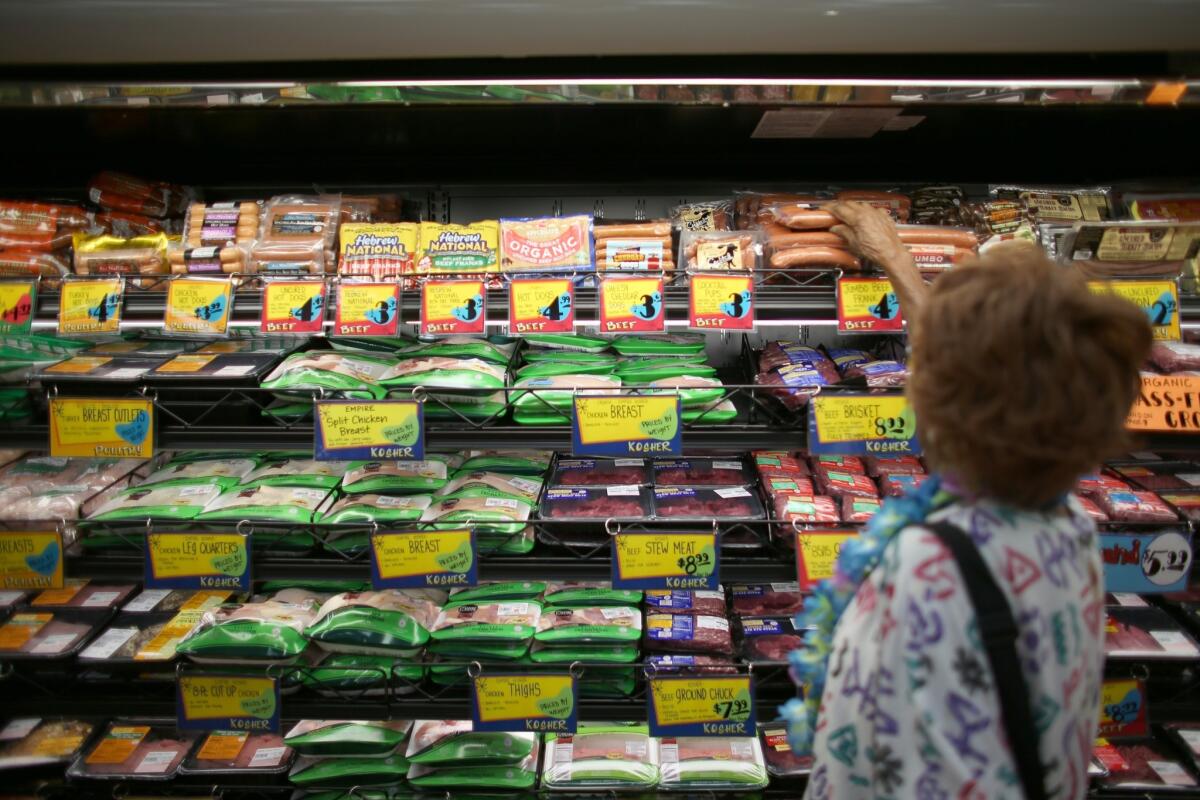On the origins of food

- Share via
This year, Chinese authorities arrested more than 900 people for selling meat marketed as lamb that was actually the flesh of foxes, rats and minks. China, for all its efforts to clean up its food industry, has an abysmal record on food safety. Indeed, part of the reason that a Chinese meat processor purchased the U.S. pork company Smithfield Foods Inc. was to piggyback on its reputation for quality, two years after Chinese consumers were sickened by pork from Chinese-raised pigs that were illegally given steroids to build muscle and reduce fat.
Mexico doesn’t have a very good track record either on meat safety; in 2011, for instance, five of its soccer stars tested positive for steroids because of tainted beef they had unwittingly eaten, prompting officials to acknowledge a broader problem involving steroid-tainted meat.
These kinds of incidents illustrate that some countries do a better job of policing their food than others, and that consumers have a compelling interest in knowing where their food comes from. That has been nearly impossible when it comes to fresh and frozen meat, though, which have been exempt from the decades-old labeling laws that cover many other foods.
On Saturday, after years of wrangling, new, more stringent labeling rules took full effect, letting consumers in the U.S. know where the meat in their stores is from so that they can make informed decisions about whether to buy it. The law requires meat to be labeled with information not only about its country of origin but also all the places it has traveled on the way to the supermarket. (It’s not unheard of for livestock to be born in one country, raised in another and slaughtered in a third.) Similar rules covering seafood have been in effect since 2005 and for produce since 2009.
After a lawsuit to stop the new meat-labeling regulations was unsuccessful, the meatpacking industry, arguing that the law’s tracking and record-keeping requirements are too onerous, embarked on a 13th-hour campaign to weaken or undo them, using the federal farm bill that is being negotiated in Congress as a vehicle. The country-of-origin rules also have been challenged by some nations through the World Trade Organization; they contend that the law is a protectionist ploy. The Department of Agriculture won a recent round after a WTO judge ruled that labeling the countries of origin was not inherently anti-trade. But other challenges remain.
Food imports have been rising for more than a decade, and China is expected in coming years to seek permission to export chicken raised in that country to the United States. Of course, U.S. food production is far from perfect, and many other nations have excellent records. But consumers should at least be given the opportunity to decide for themselves whether they want to buy meat from a particular country. And they can’t do that if they don’t have the information in the first place.
More to Read
A cure for the common opinion
Get thought-provoking perspectives with our weekly newsletter.
You may occasionally receive promotional content from the Los Angeles Times.









